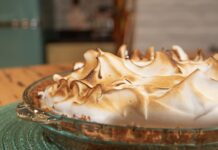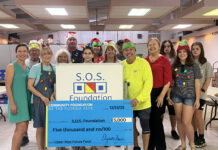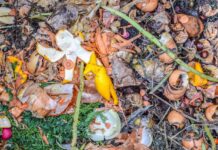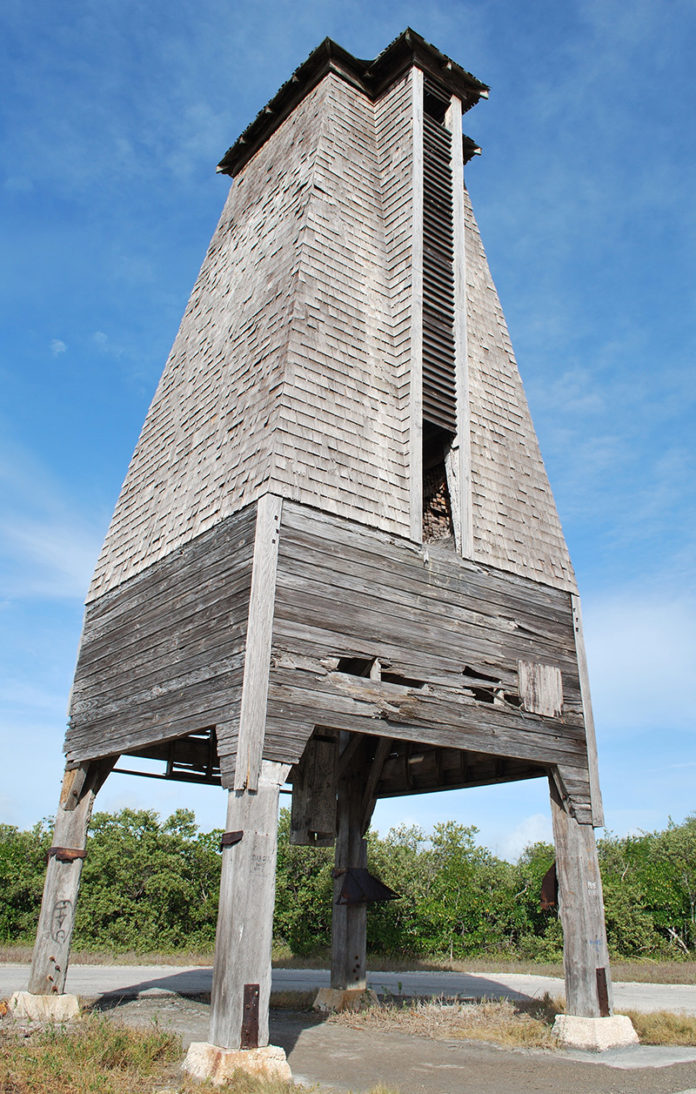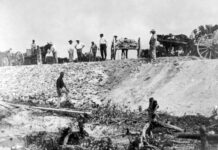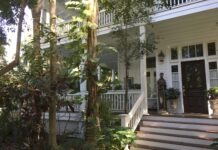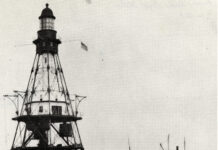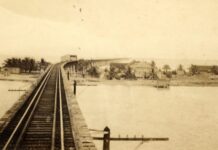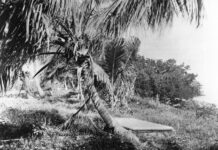In the summer of 1977, documents indicating the presence of a large, hairy, bipedal creature with a strong odor in the Florida Keys were discovered in the attic of a Key West home. The documents reported events dating back to the 16th century. The Southernmost Skunk Ape Society was established to investigate these found documents and augment them with additional research and analysis where possible. The short-lived society ceased following the unexplained disappearance of its co-founder on October 18, 1977.
Among the items discovered were notes about Sugarloaf Key’s Bat Tower. For decades it was one of the great roadside attractions along the 115-mile ribbon of asphalt known as the Overseas Highway. Sadly, 2017’s Hurricane Irma destroyed the tower. Located at Mile Marker 17, the tower was built by Clyde Perky. In the 1920s, Perky purchased land on Sugarloaf Key with the hopes of commercial development. One of his projects was creating a fishing camp. The monkey wrench in the idea was the same one that made life difficult up and down the Florida Keys — mosquitoes.
Fortunately, Perky read about Dr. Charles Campbell of San Antonio, Texas. The doctor had published a book called “Bats, Mosquitoes, and Dollar”s that detailed the vital role bats play in controlling mosquito populations. To combat the blood-thirsty hordes, Campbell promoted a bat tower of his own design because some bats dine extensively on small flying insects like mosquitoes. Perky took the advice and sent away for the doctor’s set of bat tower instructions. When the manual arrived, and the timbers were hammered and bolted into place, the tower was fitted with a plaque that read, “Dedicated to good health at Perky, Fla., by Mr. and Mrs. R.C. Perky, March 15, 1929.”
In addition to the instructions, Perky bought Dr. Campbell’s special bat attractant to lure the bats to the tower. The attractant was bat poop, officially referred to in the bat world as guano. With the tower constructed and the guano set in its place, all that was left were the bats. The Florida Keys are home to at least one indigenous species of bat, the velvety free-tailed bat. Not wanting to wait for a colony to show up on its own, in addition to the instructions and the guano, Perky sent away for a mail-order supply of bats. When they arrived, Clyde set the colony free in the general area of his guano-infused tower. As the story is historically told, the guano’s stench failed to attract the bats to the tower, and they simply flew off and away.
According to documents in possession of the Southernmost Skunk Ape Society, at least one person in the Sugarloaf Key area kept a closer eye than most on Perky’s experiment. In the days that followed, increased activity at the bat tower site was noted in the copy of a letter found in the Skunk Ape File boxes. The letter read: “The bats came back after three days. As dusk fell on the fourth day, I watched them fly out of the tower like a slow, seeping cloud and, toward the end, when just a few bats were still flying out and into the night, something else happened that I found terrifying. A large hairy figure stepped out of the trees and walked over to the tower. It must have stood all of eight feet tall and walked slowly around, staring up and down and then, here and there, reaching up and pushing at the tower’s side with those big hands. At one point, it reached up at the corner and started shaking it a little. I thought the tower would topple over. The last few bats flew out and off over the trees. That was the last time I saw either one, the big thing or the bats.”
According to the society’s records, the Bat Tower event was just one of scores of events documented in the Florida Keys. In 2021, the society’s surviving co-founder, Cliff Curry, finished compiling the Skunk Ape Files manuscript that recorded the historical context and narrative behind 50 of the most fantastic Skunk Ape-related events associated with the Florida Keys. The resulting book, The Florida Keys Skunk Ape Files, is now available on Amazon or through the Southernmost Skunk Ape Society page at www.bradbertelli.com.



